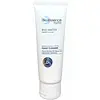What's inside
What's inside
 Key Ingredients
Key Ingredients

 Benefits
Benefits

 Concerns
Concerns

 Ingredients Side-by-side
Ingredients Side-by-side

Water
Skin ConditioningGlycerin
HumectantPalmitic Acid
EmollientStearic Acid
CleansingMyristic Acid
CleansingLauric Acid
CleansingTea-Lauroyl Collagen Amino Acids
CleansingPotassium Hydroxide
BufferingGlycol Stearate
EmollientCeteareth-25
CleansingGlyceryl Stearate
EmollientPolyquaternium-43
Niacinamide
SmoothingPanthenol
Skin ConditioningEuglena Gracilis Extract
Skin ConditioningTocopherol
AntioxidantParfum
MaskingHydroxyethylcellulose
Emulsion StabilisingSodium Hyaluronate
HumectantBHT
AntioxidantArbutin
AntioxidantPentylene Glycol
Skin ConditioningCaprylyl Glycol
EmollientEthylhexylglycerin
Skin ConditioningDisodium EDTA
Water, Glycerin, Palmitic Acid, Stearic Acid, Myristic Acid, Lauric Acid, Tea-Lauroyl Collagen Amino Acids, Potassium Hydroxide, Glycol Stearate, Ceteareth-25, Glyceryl Stearate, Polyquaternium-43, Niacinamide, Panthenol, Euglena Gracilis Extract, Tocopherol, Parfum, Hydroxyethylcellulose, Sodium Hyaluronate, BHT, Arbutin, Pentylene Glycol, Caprylyl Glycol, Ethylhexylglycerin, Disodium EDTA
Water
Skin ConditioningGlycerin
HumectantSodium Cocoyl Glycinate
CleansingButylene Glycol
HumectantHydroxypropyl Starch Phosphate
Cocamidopropyl Betaine
CleansingPEG-400
Emulsion StabilisingDecyl Glucoside
CleansingPotassium Cocoyl Glycinate
Sodium Stearoyl Glutamate
CleansingGlyceryl Stearate Se
EmulsifyingCitric Acid
BufferingLauric Acid
CleansingStearic Acid
CleansingDisodium Cocoyl Glutamate
CleansingPhenoxyethanol
PreservativeHexylglycerin
HumectantSodium Cocoyl Glutamate
CleansingBHT
AntioxidantDisodium EDTA
Hydroxypropyl Methylcellulose
Emulsion StabilisingHydroxypropyltrimonium Hyaluronate
Sodium Acetylated Hyaluronate
HumectantTocopherol
AntioxidantWater, Glycerin, Sodium Cocoyl Glycinate, Butylene Glycol, Hydroxypropyl Starch Phosphate, Cocamidopropyl Betaine, PEG-400, Decyl Glucoside, Potassium Cocoyl Glycinate, Sodium Stearoyl Glutamate, Glyceryl Stearate Se, Citric Acid, Lauric Acid, Stearic Acid, Disodium Cocoyl Glutamate, Phenoxyethanol, Hexylglycerin, Sodium Cocoyl Glutamate, BHT, Disodium EDTA, Hydroxypropyl Methylcellulose, Hydroxypropyltrimonium Hyaluronate, Sodium Acetylated Hyaluronate, Tocopherol
Ingredients Explained
These ingredients are found in both products.
Ingredients higher up in an ingredient list are typically present in a larger amount.
BHT is a synthetic antioxidant and preservative.
As an antioxidant, it helps your body fight off free-radicals. Free-radicals are molecules that may damage your skin cells.
As a preservative, it is used to stabilize products and prevent them from degrading. Specifically, BHT prevents degradation from oxidation.
The concerns related to BHT come from oral studies; this ingredient is currently allowed for use by both the FDA and EU.
However, it was recently restricted for use in the UK as of April 2024.
Learn more about BHTDisodium EDTA plays a role in making products more stable by aiding other preservatives.
It is a chelating agent, meaning it neutralizes metal ions that may be found in a product.
Disodium EDTA is a salt of edetic acid and is found to be safe in cosmetic ingredients.
Learn more about Disodium EDTAGlycerin is already naturally found in your skin. It helps moisturize and protect your skin.
A study from 2016 found glycerin to be more effective as a humectant than AHAs and hyaluronic acid.
As a humectant, it helps the skin stay hydrated by pulling moisture to your skin. The low molecular weight of glycerin allows it to pull moisture into the deeper layers of your skin.
Hydrated skin improves your skin barrier; Your skin barrier helps protect against irritants and bacteria.
Glycerin has also been found to have antimicrobial and antiviral properties. Due to these properties, glycerin is often used in wound and burn treatments.
In cosmetics, glycerin is usually derived from plants such as soybean or palm. However, it can also be sourced from animals, such as tallow or animal fat.
This ingredient is organic, colorless, odorless, and non-toxic.
Glycerin is the name for this ingredient in American English. British English uses Glycerol/Glycerine.
Learn more about GlycerinLauric Acid is a fatty acid or lipid. About half of fatty acids in coconut oil is lauric acid.
This ingredient helps hydrate and sooth skin. As a humectant, it helps trap moisture. It also aids in cleaning and enhancing the texture of products.
Lauric acid may not be Malassezia folliculitis, or fungal acne, safe.
Learn more about Lauric AcidStearic Acid is a fatty acid. It is an emollient, emulsifier, and texture enhancer.
As an emollient, stearic acid helps soften skin. It aids the skin's protective barrier by preventing water loss. It also provides a gentle cleansing effect without stripping away natural oils.
Stearic acid may also be used to enhance the texture of products. It can add volume and stabilize ingredients such as water and oil. This can help water and oil ingredients from separating.
Sources of stearic acid include animal or vegetable fats/oils such as coconut or shea. It can be naturally found in butter, cocoa butter, shea butter, vegetable fats, and animal tallow.
This ingredient may not be Malassezia folliculitis, or fungal-acne safe.
Learn more about Stearic AcidTocopherol (also known as Vitamin E) is a common antioxidant used to help protect the skin from free-radicals and strengthen the skin barrier. It's also fat soluble - this means our skin is great at absorbing it.
Vitamin E also helps keep your natural skin lipids healthy. Your lipid skin barrier naturally consists of lipids, ceramides, and fatty acids. Vitamin E offers extra protection for your skin’s lipid barrier, keeping your skin healthy and nourished.
Another benefit is a bit of UV protection. Vitamin E helps reduce the damage caused by UVB rays. (It should not replace your sunscreen). Combining it with Vitamin C can decrease sunburned cells and hyperpigmentation after UV exposure.
You might have noticed Vitamin E + C often paired together. This is because it is great at stabilizing Vitamin C. Using the two together helps increase the effectiveness of both ingredients.
There are often claims that Vitamin E can reduce/prevent scarring, but these claims haven't been confirmed by scientific research.
Learn more about TocopherolWater. It's the most common cosmetic ingredient of all. You'll usually see it at the top of ingredient lists, meaning that it makes up the largest part of the product.
So why is it so popular? Water most often acts as a solvent - this means that it helps dissolve other ingredients into the formulation.
You'll also recognize water as that liquid we all need to stay alive. If you see this, drink a glass of water. Stay hydrated!
Learn more about Water